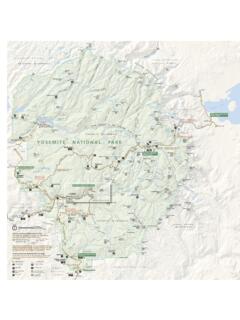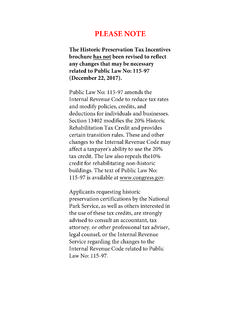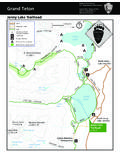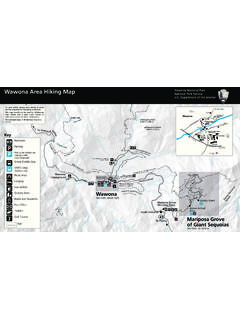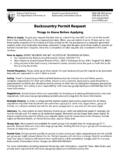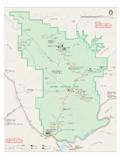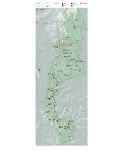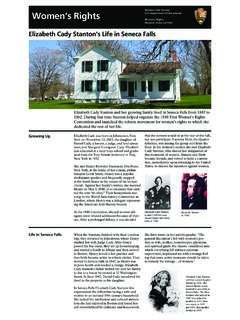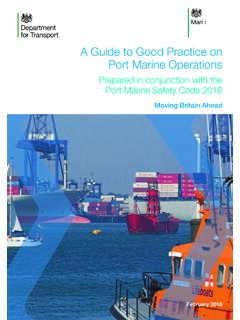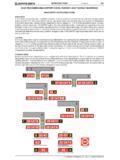Transcription of The Middle Passage - NPS
1 The Middle Passage If you look at the sea long enough, scenes from the past come back to life. The sea is history the sea has nothing to give but a well excavated grave.' 1 The Atlantic Ocean is a graveyard which holds the bodies of the enslaved Africans thrown overboard. The Atlantic Ocean is also an archive of black history; it tells the stories of all those lost in the journey to the Americas, the accounts of what happened aboard each ship, and echoes the anguish of all the words unspoken by the suffered. It was through the Middle Passage , in which the words family, neighbor, friend, wife, brother, sister, were lost. John Newton, a slave ship captain during the 1800s, wrote in Thoughts upon the African Slave Trade, "With our ships, the great object is, to be full. When the ship is there, it is thought she should take as many as possible. The cargo of a vessel is calculated to purchase from two hundred and twenty to two hundred and fifty slaves the slaves lie in two rows, one above the other, on each side of the ship, close to each other, like books upon a shelf.
2 2 It is inherently problematic in how the ship is viewed as more of a living being in the captain's referral to it as a she, while the enslaved Africans were reduced to simple commodities through the captain's comparison to books on a shelf. Furthermore, the very act of placing a value on a person supports dehumanization the commodification of the enslaved Africans devalues their existence to something easily bought or The Middle Passage converted enslaved Africans to just another piece of property for the plantation owners, A slave without a past had no life to avenge 4 and had been forced to forget mother, 5 in the sense that the only thing left was a sense of hopelessness that made the enslaved Africans forget their origins, their countries, and their freedom; through this, it was easy to create a social hierarchy with the Africans at the bottom. This concept was the justification for disregarding the enslaved Africans' lives.
3 The case of the Zong Massacre is an example of the indifference towards the lives of the enslaved Africans. During the voyage of a slave ship, the Zong, from Guinea in West Africa to Jamaica in the Caribbean, the ship's captain, Luke Collingwood, ordered for 132 of the 440 enslaved Africans to be thrown overboard. When the Zong arrived in Jamaica, the ship's co-owners, William, James, and John Gregson, filed an insurance claim pertaining to their lost cargo. 6 Even when criminal charges were filed against the captain, the crew, and the owners, Justice John Lee rejected such charges by contending, What is this claim that human people have been thrown overboard? This is a case of chattels or goods. Blacks are goods and property; it is madness to accuse these well-serving honorable men of murder The case is the same as if wood had been thrown overboard. 7 The only factual part of what Lee said was that the Captain Collingwood murders were not put on trial, but rather the insurance value in which the crew members would receive was.
4 8 Even before the Zong incident, the very act of having insurance in the case of damaged goods stripped the Africans of all identity and humanity, reducing the Africans to a price rather than identifying as a human. Among others, Lee believed that the enslaved Africans were fungible objects, readily replaced and in surplus the continuation of this perspective in society aided the perpetuation of slavery. 1. Portugal and Africa maintained a stable and peaceful relationship, which caused a shift in the acquisition of enslaved The Portuguese understood not to kidnap Africans, and to encourage African merchants and kings to provide a supply of enslaved Africans as a commodity such as gold, ivory, and This allowed for the expansion of the Middle Passage into the Transatlantic Slave Trade. The journey to the New World lasted around 50 to 80 days depending on which ports the ships came from and were headed Most enslaved Africans came from the West Africa and Angola and were brought over to the eastern-coast of the Americas.
5 However, the exploitation of Africans did not begin with the Middle Passage , nor did it only include the Atlantic Slave Trade. The selling of enslaved Africans crossed the Sahara Desert, the Red Sea and the Indian Ocean, marking the very beginning routes of the Middle Passage . 12 The infamous Middle Passage spanned across the Atlantic and into the New World, usually lasting more than seven weeks. Men were separated from women and held at the bow of the ship, whereas the women were held toward the stern of the ship. Throughout the course, the imprisoned Africans typically ate once or twice a day and were rarely brought onto the deck for fresh What lay ahead would be a long and difficult course that would eventually lead to a revolutionary change in history. The transportation of enslaved Africans through the Middle Passage is often considered to be one of the largest forced migrations in history. Along the west coast of Africa, there were about sixty trading posts that brought in Europeans to trade their riches for human cargo.
6 In these slave trades, the people captured were often abducted in raids or wars against their enemy African The kidnappings lead thousands of potentially enslaved Africans to walk many miles, shackled and starved throughout these marches. 15 The ones who reached the coastal ports, which was usually only half of the amount of people the Portuguese began with, would then be directed onto ships, where another journey lay ahead. Once aboard the ships to North America, the enslaved Africans were crammed like loaves of bread on a shelf. 16 It was so crowded between decks there was no standing space; there was an average of six to seven feet of space and barely more than two or three feet for head space. 17 The air in these tight spaces made breathing very hard and the unbearable heat offered no comfort. With hundreds of people crammed into a tight space, enslaved Africans were forced to lie on their backs as their head lay between another's legs.
7 18 This led to disease, as feces and urine lined the floors of the slave ships. Millions of people died during the crossing, and those who were found dead or sick were thrown overboard. When the captive Africans stepped onto North American soil, sellers automatically separated the Africans into groups based on their physical condition and appeal to Once sold, enslaved Africans were branded for The enslaved Africans were forced to obey their overseers and toiled on plantations and in factories throughout the New World. In North America, the poor treatment of the enslaved Africans spread throughout the coastal colonies as well as the Caribbean. The ships landed in port cities along the Eastern United States that trafficked enslaved Africans. A list of these port cities is provided as follows:21. 2. Portsmouth, NH Hollywood, MD Jekyll Island, GA. Salem, MA Georgetown, Amelia Island, FL. Boston, MA Washington DC St. Augustine, FL.
8 New Bedford, MA Fredericksburg, VA Mosquito Inlet, FL. Providence, RI Richmond, VA Key West, FL. Bristol, RI Yorktown, VA Pensacola, FL. Newport, RI Hampton, VA Mobile, AL. Middletown, CT Jamestown, VA Biloxi, MS. New London, CT Wilmington, NC New Orleans, LA. New York, NY Charleston, SC La Balize, LA. Perth Amboy, NJ Sullivan's Island, SC Deweyville, TX. Philadelphia, PA Beaufort, SC Sabine Lake, TX. Annapolis, MD Savannah, GA Galveston, TX. Oxford, MD Sapelo Bay, GA. Enslaved Africans treated as commodities in America, and were also traded in the Caribbean, with countless ports accepting enslaved Africans south of the equator as well. Slavery was ingrained in the history of the Caribbean, with its origin being tied to creation of the plantation economy brought about by the introduction of the farming of sugar in the region, as far back as the plantations of St Kitts in the This was due to the rise of the cash crop; it became more profitable to farm one product, purely for sale and export, than to farm for personal consumption and sell the excess.
9 As a result, farmers instituted the plantation system, where there was money to be made. Due to the requirement of vast swaths of land for the boom in this new style of farming, eyes shifted to the Caribbean. There, land was cheaper and there were less regulations. New farmers needed more hands to work their larger pieces of land, profit was of the utmost importance, farmers sought the cheapest possible means of securing workers; hence, slavery was chosen. The one-time cost of acquiring a worker was much cheaper than paying someone a regular wage. Additionally, enslaved Africans had no rights, a renewable workforce, with the children of enslaved Africans inheriting their slave status from their parents. The slave system was so profitable that nearly 350,000 enslaved Africans were transported to the Leeward Islands alone by In addition, between 1662 and 1807, Great Britain transported over million enslaved Africans through the transatlantic slave Slavery may have been an extremely profitable system in the Caribbean, but it was a very unregulated one, especially in its infancy.
10 It was not until 1661 that any effort was made to create an order for the chaos that was the system of slavery; the 1661 Act for the Better Governing and Ordering of Negroes was the first attempt in the English Americas to come up with a legal guide for a slave In fact, before the Amelioration Act was passed in 1798, which required slave owners to provide adequate living conditions for their enslaved Africans, enslaved Africans were, for the most part, extremely poorly taken care of, as owners would simply buy new ones when the old ones died, as a slave was seen as less than human, and could be treated as But the new rules and regulation did not slow the slave system in the Caribbean, and in fact 3. served to streamline the system, and make it less disorganized. Slavery would continue in force, until its abolition in the British Caribbean on August 1, It would go on for much longer in some parts of the region, such as Cuba, which only abolished it in While there was much money, and massive profits to be made off of the work of enslaved Africans, the enslaved Africans had to get to the plantations in the Americas first.
